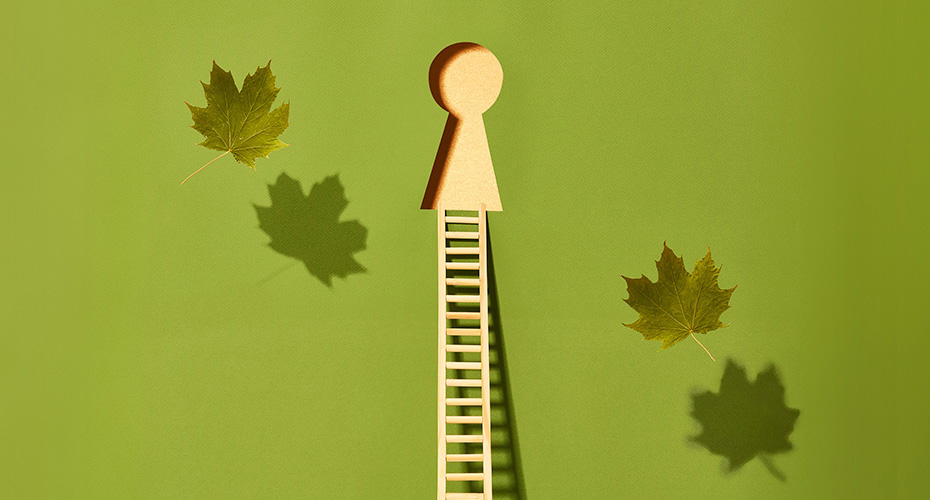Published January 24, 2024 • 9 Min Read
For those new to Canada, understanding and adapting to your new financial landscape is crucial as you settle into your new country. Typically, this involves familiarizing yourself with various financial products, understanding how to use them, and adopting effective money management practices.
In Canada, where the economy relies heavily on credit, it’s common for people to use credit cards and other credit products for purchases. As a result, lenders estimate your financial stability based on your credit history or score, and for newcomers, the easiest way to build your credit history is to get a Canadian credit card. However, some newcomers may find the concept of credit unfamiliar or uncomfortable.
This article addresses common questions about credit cards, providing valuable tips on using your Canadian credit card wisely to enhance your financial well-being.
What is a credit card?
A credit card is a physical card issued by your bank or financial institution that allows you to make purchases using borrowed money. This means you take credit from your bank to buy goods or services and later repay the amount to the lender.
It’s important to keep in mind that any money you spend using your credit card must be repaid. A credit card should not be considered free money as high interest rates apply to late or missed payments.
Why do newcomers need a Canadian credit history?
The Canadian economy is credit-based. Anytime you apply for credit, whether it’s a credit card, a loan, a line of credit, or a mortgage, the bank reviews your credit history or score to assess your history of taking and repaying credit. This helps them ensure that it’s not too risky to loan you the money and that you’re likely to pay it back.
Besides potential lenders, you may also be asked for your credit history or score by your landlord before they rent you a home or by potential employers (especially in the financial sector). To build your credit history, using credit products like a credit card regularly is essential. You must also repay the credit you take on time, to avoid a negative impact on your credit history.
Key terms to know before using a credit card in Canada
Credit card billing cycle
The billing cycle usually lasts between 28 and 31 days and does not change over time. Your monthly credit card bill covers transactions made with your credit card during your billing cycle. For instance, a billing cycle from January 15 to February 11 includes all transactions made during that time, in addition to any outstanding balance.
Statement balance
Your statement balance is the amount of credit you’ve accumulated on your card during your billing cycle. It is the total of all transactions made during your billing cycle, plus any pending balance and interest.
For instance, in the January 15 to February 11 billing cycle, you made four transactions on your credit card: a $45 phone bill payment, a $5.50 coffee purchase, a $65 restaurant bill, and $380 for groceries, and you have no outstanding balance from the previous billing cycle. Your statement balance on February 11 will be $495.50.
Credit card grace period
Grace period is the number of days between when your statement is issued and when your payment is due. This is usually a 21-day period but may vary based on the terms and conditions of your bank. You won’t get charged interest if you pay your balance in full before or on your statement due date. If you only make the minimum payment during your grace period, you’ll still have to pay interest but won’t get charged a late payment fee.
For instance, if your billing cycle ends on February 11, you can pay your statement balance until March 5 without being charged interest.
Minimum payment for your credit card
The minimum payment is the lowest amount you need to pay by the end of your grace period to avoid late fees, a negative mark on your credit history, or increased interest rates on your credit card.
Typically, in Canada, the minimum payment required is either $10 or three per cent of your statement balance, whichever is higher. The only exception is in the province of Quebec where the minimum payment is 3.5 per cent of the statement balance.
Interest rate
Canadian credit cards can accrue interest at very high rates ranging from 8.99 per cent (for low-interest cards) to 22.99 per cent per year (calculated monthly). Interest rates may vary based on the type of transactions, such as purchases or cash advances.
You can avoid interest and consequently, credit card debt, by paying your credit card bill in full and on time before the grace period for each cycle ends.
Credit limit
Your credit limit is the maximum amount the bank or lender allows you to spend using your credit card. When you get your credit card, the credit limit will be mentioned in the documentation you receive.
As a newcomer building your credit history in Canada, it is advisable to keep your credit utilization ratio low by spending less than 35 per cent of your credit limit.
Although, most financial institutions offer newcomers low credit limits, you can get a credit limit of up to $15,000 on an RBC Cash Back Mastercard, depending on your income and assets. Moreover, you may be eligible for increases in your credit limit as your Canadian credit history improves.
Types of credit card transactions
In Canada, you can use your credit card for a variety of transactions, including purchases, cash advances and more. Often, the interest rates may differ based on the type of transactions made on your credit card, so it’s essential to understand the common types of transactions:
Credit card purchases
A purchase is when you use a credit card to buy goods or services at a physical store, online, over the phone, by mail, or through automated pre-authorized debits. Purchases are the most common type of credit card transaction.
When using a credit card, you may be eligible to pay for certain large purchases in installments, and the interest rate for these payments will be lower than the purchase interest rate on your credit card.
Merchant surcharge on credit card transactions
Some merchants add a surcharge to the purchase amount when you pay using a credit card. This surcharge may be as high as 2.4 per cent of the purchase price, but the merchant must inform you about this before you make the payment.
Cash advances using credit cards
A cash advance allows you to withdraw cash from an Automated Teller Machine (ATM) or branch using your credit card. Often, wire transfers, money orders, and traveller’s cheques made from your credit card account may also count as cash advances. Unlike with your debit card where withdrawals happen from your account, when you use a credit card for a cash advance, you’re borrowing money from the bank.
The interest charged on cash advances is typically higher than that on purchases, but the interest rate varies depending on the credit card you have. Cash advances also do not have a grace period, so you start getting charged interest as soon as your billing cycle ends. Banks may also charge a transaction fee for each cash advance you take.
Credit card balance transfer
A balance transfer is when you transfer the outstanding balance on an existing credit card to a new lower-interest credit card. This can help make credit card debt more manageable, as you’ll be charged less interest as you repay your balance. Some banks charge a one-time balance transfer fee, which may be a percentage of the balance being transferred.
Six credit card tips for newcomers to Canada
Having and using a credit card is a great way to start building your credit history in Canada. However, a credit card is not free money, and unless you’re able to quickly pay back what you owe, you may be charged very high interest on your outstanding balance. These tips will help you use your Canadian credit card effectively and wisely:
-
-
Use your credit card regularly: As a newcomer, you should use your credit card regularly for everyday transactions, such as grocery shopping or transit fares. However, make sure you’re only spending what you can afford to repay each month.
-
-
-
Pay your bill in full and on time: Ideally, you want to pay your entire statement balance on or before your payment due date (before your grace period ends) to avoid interest charges. If that isn’t possible, pay at least the minimum payment to avoid a negative impact on your credit history. Pre-authorizing your credit card payments can make the bill payment process seamless.
-
-
-
Use 35 per cent or less of your credit limit: Your credit utilization ratio (total credit used / total credit available) is one of the factors that goes into calculating your credit score. Banks may be reluctant to extend credit to individuals with a high credit utilization ratio, and it is recommended that newcomers keep their spending to under 35 per cent of their total credit limit.
-
-
-
Keep tabs on your credit card statement: Transactions you don’t recognize or didn’t make may be an indication that your credit card is being misused. Be sure to flag unauthorized use of your credit card to your bank and credit bureaus as soon as possible. You can also lock your RBC credit card through the banking app if you suspect your card has been lost, stolen, or misused, to avoid unauthorized or fraudulent usage.
-
-
-
Request a credit limit increase: Some banks may offer or allow you to request a credit limit increase after you’ve established at least a few month’s use and payment history. Your credit score might drop a few points if the bank runs a credit check before increasing your limit. However, in the longer term, a higher credit limit can help reduce your credit utilization ratio and help build your credit history.
-
-
-
Avoid getting more than two credit cards initially: Every time you apply for a credit card, lenders will run a credit check, and a history of frequent credit checks can have a negative impact on your credit history. As a newcomer, it’s best to avoid credit-seeking behaviour and make do with one or two credit cards.
-
Ready to apply for a Canadian credit card? Browse through the RBC credit card options for newcomers and connect with us to apply.
This article is intended as general information only and is not to be relied upon as constituting legal, financial or other professional advice. A professional advisor should be consulted regarding your specific situation. Information presented is believed to be factual and up-to-date but we do not guarantee its accuracy and it should not be regarded as a complete analysis of the subjects discussed. All expressions of opinion reflect the judgment of the authors as of the date of publication and are subject to change. No endorsement of any third parties or their advice, opinions, information, products or services is expressly given or implied by Royal Bank of Canada or any of its affiliates.
Share This Article






